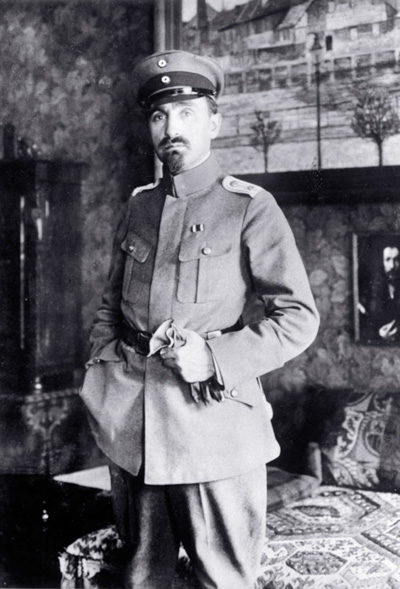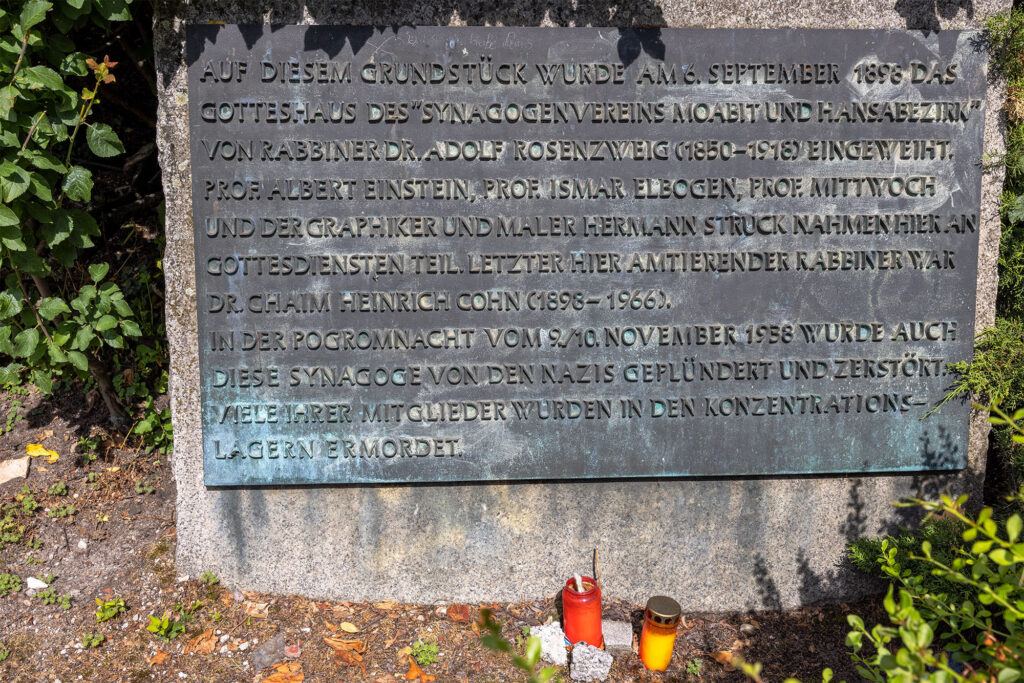Hermann Struck (Chaim Aaron ben David), 1876−1944, artist, teacher, activist.

Hermann Struck cut a “splendid figure with [his] handsome, aristocratic head with its keen eyes, aquiline nose and Van Dyke beard.”1Newman, Elias, Artist in the Yishuv…Herman [sic] Struck. The Jewish Press [New York], September 7, 1945, p. 62. His easy, unencumbered manner and abundant personal gifts that “encompassed the whole range of his manly virtues, from his international artistic prestige to his ability to hold his liquor”2Zweig, Arnold, Herman Struck – Ein Meister der Grafik; Zum 80. Geburtstag des Künstlers, Bildende Kunst, Verband Bildender Künstler der Deutschen Demokratischen Republik , 1956, p. 148-150. made him a charismatic emissary in Europe and the United States for the Mizrahi movement. He was no less appreciated by—and generous to—colleagues, students and friends. (Struck tutored older, more famous colleagues, like painters Lovis Corinth, Lesser Ury and Max Liebermann, as well as younger ones, like Marc Chagall and Jacob Steinhardt.) Critic Max Osborn, called Struck “the best, most selfless companion.”3Osborn, Max, Hermann Struck: Ein grosser Maler und ein frommer Mann, Aufbau [Omaha, Nebraska], January 21, 1944, p.9. And all of this is merely in addition to his copious etchings, drawings and paintings, most famously, a portrait of Theodor Herzl that gave Struck an honored place in countless Jewish homes and, as much as anything else, earned him the designation “the artistic soul of Israel.”4Rittenberg, Louis, The Brush of a Master. The American Hebrew: A Magazine for American Jews [New York], Marc 9, 1928, p. 609
Born in Berlin to well-to-do orthodox parents, Hermann Struck remained devoutly observant his entire life, often to the wonderment of his more secular associates. After studying at the Berlin Academy of Art with Hans Meyer, who introduced Struck to etching, and Max Koner, a well-known portraitist, he met and befriended Jozef Israëls, who became his mentor. Israëls’ etchings are among those featured in Struck’s landmark Die Kunst des Radierens (The Art of Etching), published to universal acclaim in 1908. Struck exhibited in internationally, including as one of eleven artists at the Fifth Zionist Congress (1901) in Basel. He was a member of the Berlin Secession and, almost uniquely (as a German), the Royal Society of Painters, Etchers and Engravers of Great Britain. He created incisive portraits of Richard Dehmel, Gerhard Hauptmann, Albert Einstein and Sigmund Freud, to name a few of the cultural and intellectual giants he encountered in his Berlin years. After enlisting in the German army in 1915, his assignment brought him into first hand contact with Eastern European Jews, for whom he developed a profound affinity. On issues concerning them, Struck acted as consultant to the German delegation at the Versailles Peace Conference. In 1920, over 50 etchings of the people he had seen and their way of life appeared in Das ostjüdische Antlitz (The Face of Eastern Jewry), with text by Arnold Zweig. Another postwar publication of wartime drawings was Kriegsgefangene (Prisoners of War). In contrast to the tenderness and admiration that suffuses Das ostjüdische Antlitz, these one hundred lithographs, done at the behest of the authorities and with the participation of anthropologist Felix von Luschan, are tainted with then prevalent ethnological biases and racial theories.
In 1922, Struck and his wife Wally established a home in Haifa, where he turned more intensively to painting landscapes and welcomed a steady stream of visitors. He taught at the Bezalel School, although according to Zweig, he was never fully embraced by Palestine’s younger more expressionistic and less realistic art world.5Zweig, Arnold, Herman Struck – Ein Meister der Grafik… 1956, p. 148-150. In November 1931, Struck, a very active member of the Board of the Jewish National Fund, and the two other members of the jury (Shaul Tchernichovsky and S.A. Van Vriesland) awarded first place in the competition to design a cover for the JNF’s fifth Golden Book to Ismar David. David lived in Struck’s villa in Hadar Carmel and worked in his workshop while executing the work.
A trace of Herman Struck’s life in Berlin can be found in its Hansaviertel, a short walk from the Bellevue S-Bahn stop:
On September 6, 1896, on this piece of land, the house of worship of the “Synagogue Society of Moabit and the District of Hansa,” was dedicated by Rabbi Dr. Adolf Rosenzweig (1850-1918). Prof. Albert Einstein, Prof. Ismar Elbogen, Prof. Mittwoch and the graphic artist Hermann Struck took part in religious services here. The last rabbi to serve here was Dr. Chaim Heinrich Cohn (1898-1966).
On the night of the pogrom between November 9 and 10, 1938, this synagogue was also plundered and destroyed. Many of its members were murdered in concentration camps.


























